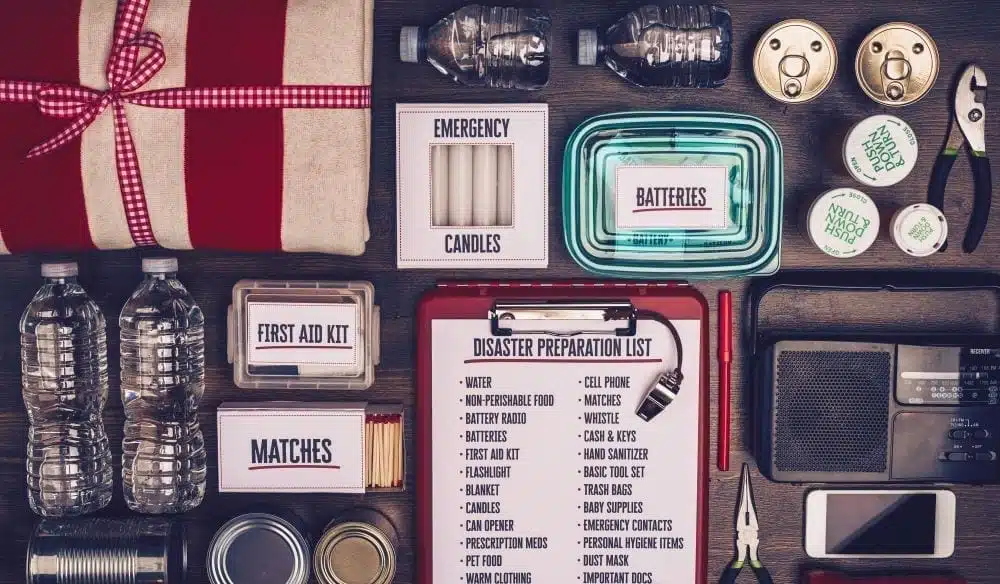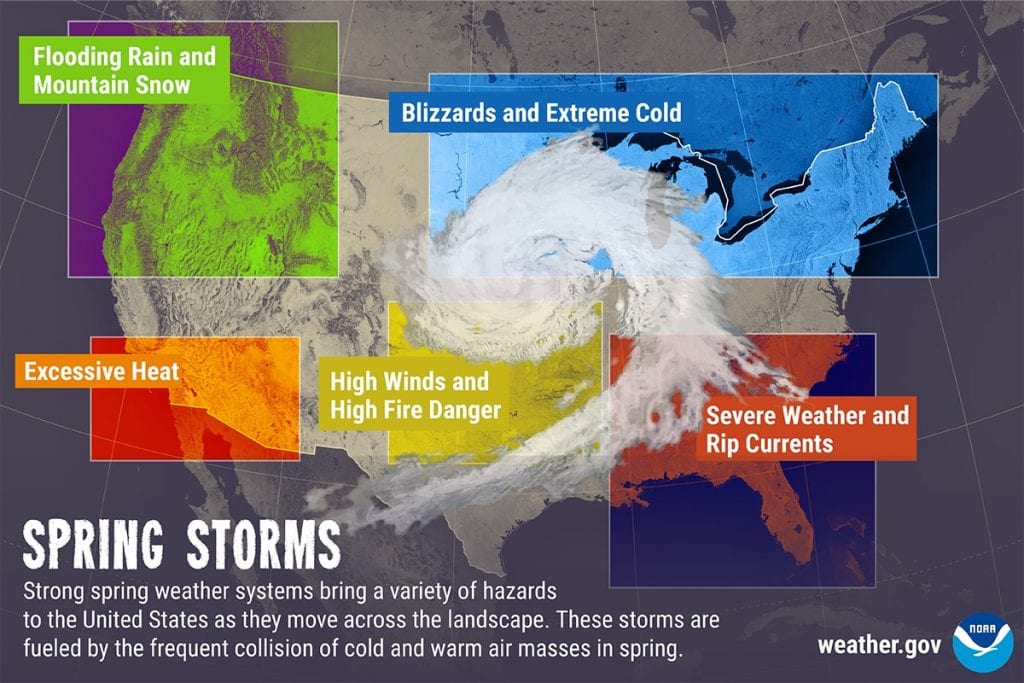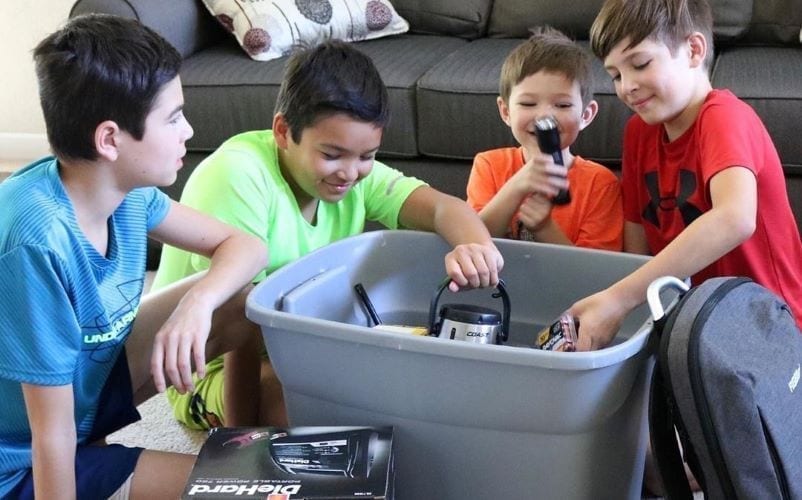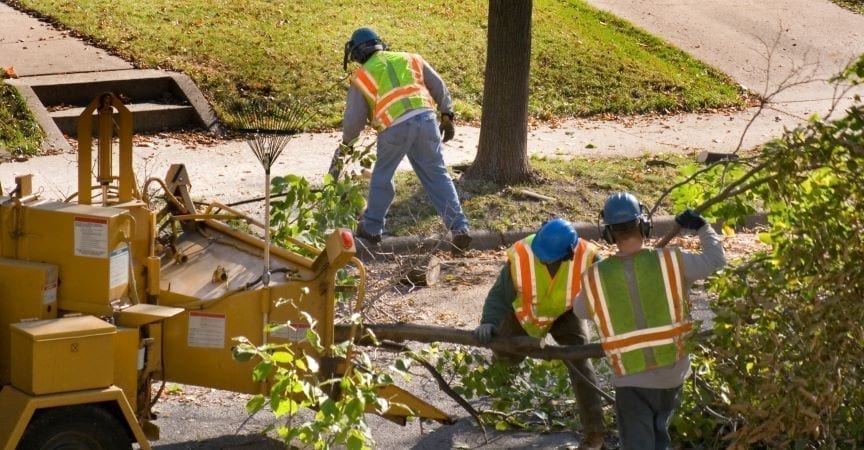
Are You Ready? 11 Disaster Preparedness Tips for Protecting You, Your Family and Your Home
Remodeling and Renovation Tips
Imagining all the disasters that could strike your family and home isn’t the most fun thing in the world. But it’s important to be pragmatic and plan ahead in case disaster strikes. Whether it’s a fire, flood, hurricane, earthquake, tornado or global pandemic, disaster preparedness is key to keeping your family safe and healthy.
To help you get organized, we’ve rounded up the best disaster preparedness tips and resources.

1. Know which disasters you need to be ready for
Where you live has a lot to do with which disasters you should prepare for. If you live in California, you’ll need to think about earthquakes. Live in a Midwestern state like Oklahoma or Texas? A tornado is the number one emergency. If you’re in Florida, you might be in the path of a hurricane. Knowing which disaster you’ll likely face will help you come up with the best plan, whether that’s fortifying your house against earthquakes or making sure your roof will stand up to high winds and heavy rain brought by hurricanes and storms.
Knowledge is key when it comes to disaster preparedness. If you’ve just moved to a new city or state, you should become aware of what the potential hazards may be and what you can do to prepare.
Do you know if your home is in a flood zone? If so, do you know which level it is, for evacuation purposes? What about wildfires? Are you in a high fire hazard zone? While most of us don’t like to think about scary events, knowing the risks and what you can do to prepare and protect your family can help reduce anxiety.

2. Sign up for emergency alerts
Stay informed with information you can trust by taking just a few minutes to sign up for emergency alerts from your local government and other reliable sources. Unfortunately, when disasters strike, there can be all types of misinformation and rumors spread on social media, word of mouth, and even some media outlets.
Protect yourself and your family by getting timely facts direct from the source before, during, and after a disaster. For example, local alert systems have been a lifeline for staying on top of the latest developments related to COVID-19 coronavirus prevention, testing, and even business and financial assistance.
Most cities, counties, and school systems have an easy “opt-in” sign-up process to receive alerts via email, text, or both. A quick way to find your government’s free emergency alert service is to google “city/county name emergency alerts.” For example, if you type “NYC emergency alerts” in your search bar, you’ll come right to the link for Notify NYC, New York City’s official source for information about emergency alerts and important city services, as well as links to a mobile alert app. Like NYC, many local governments offer alert apps you can download, and you can also follow their notices on Facebook or Twitter.
Other free, must-have apps for disaster preparedness include:
- FEMA (Federal Emergency Management Agency) app, which enables you to:
- Get real-time National Weather Service alerts for up to five U.S. locations
- Locate open emergency shelters in your area and find disaster recovery centers
- Learn emergency safety tips for over 20 types of disasters
- Red Cross apps for specific disasters and needs, such as:
- Tornadoes
- Hurricanes
- Earthquakes
- Floods
- General emergencies
- Basic first aid and pet first aid
3. Make a plan with your family members
Disaster can strike at any time, and when it does, cell phone networks are easily overwhelmed. That’s why it’s important to come up with a way to communicate with family members and let them know you’re all right. One way is to set an out-of-state contact that everyone can get in touch with. Often, long-distance phone calls are easier to make than local calls during a disaster. Also, keep in mind that text messages go through more easily than phone calls.
According to Ready.gov, you should figure out a designated emergency meeting place. Make sure it's somewhere that’s familiar and accessible to every family member. If you live in a place with tornadoes or storms, each family member needs to know where to go for protection, whether that’s a basement or a small room like a closet.
Set a neighborhood meeting place in case of a fire or a disaster that won’t let you get home. Brainstorm places outside your own neighborhood too, like a library or community center. Need to leave the area entirely? Set an out-of-town meeting place, like the home of a relative or family friend.

4. Learn how to evacuate and where to go
Some disasters will require evacuation from your home, so you should prepare for that possibility. First, you want to know if your home is in a high-level evacuation zone, which would mean you could be among the most likely to be required to evacuate in case of a hurricane, wildfire, or other disaster. You can usually learn about evacuation zones by visiting the “emergency management” website for your local government, or by googling evacuation zones for your state.
Your next step is to identify two to three options for where you could go in case of emergency, such as a friend or relative’s home or a motel. Often, you don’t need to go far to get to a safe place. The closer you can stay, the better, as this keeps roads clear, saves gas, and makes it much easier for you to return home when it’s safe. If you plan to stay with friends or family, talk to them in advance to make sure their home is safe and they can handle guests. Likewise, some motels will make advance reservations in case of emergencies. These types of options are generally much more comfortable than going to a public shelter, and it helps save room for residents who truly have no place else to go.
Here’s some of what you’ll need to do if you’re evacuated:
- Download your local government's emergency alert app (if available), and the FEMA app to locate shelters in your area (just in case), and listen to a battery-powered radio for evacuation instructions.
- When leaving your home, take your emergency supply kit
- Keep in mind that many shelters only allow service dogs, so you may have to find a different place to stay if you have a dog or a cat.
- Unplug electrical equipment like radios and televisions, but you can keep refrigerators and freezers plugged in.
- You may be instructed to shut off gas, water, and electricity to your home before you go.
- Tell friends or a family member where you’re going, or leave a note on your door.
- See if any of your neighbors need help evacuating to the nearest shelter.
- If flooding is the disaster you’re evacuating from, elevate furniture if you have time.
- If high winds are expected to hit your property, secure all outdoor objects like grills and patio furniture, or move them inside.
Also, keep in mind how the coronavirus can affect evacuation and other disaster planning. Take a look at these tips from the CDC about dealing with coronavirus during a disaster.

(Credit: @blogaboutitall via Instagram)
5. Get your Disaster Preparedness emergency kit ready
You’ve probably heard about an emergency preparedness kit many times, but did you ever put one together? Now’s the time to take this important step in disaster preparedness. An emergency preparedness kit is key when disaster strikes; you can either use it at home or take it with you to a shelter.
Not sure what to put in your kit? Here are some recommendations from The Red Cross:
- One gallon of water per person per day (3-day supply for evacuation, a 2-week supply for at home)
- Non-perishable food, like canned and boxed foods (3-day supply for evacuation, a 2-week supply for at home)
- Flashlight
- Battery-powered or hand-crank radio
- Extra batteries
- First aid kit
- Medications and medical items
- Multi-purpose tool
- Sanitation and personal hygiene items
- Copies of personal documents and records (medication list, deed for your home, passports, birth certificates)
- Cell phone with chargers
- Emergency contact information
- Extra cash
- Emergency blanket
- Maps of the area
This list is just a minimum. Think about which disasters are most likely to strike your area, and plan accordingly. Some ideas for additional items include raincoats, towels, duct tape, scissors, and sleeping bags.
6. Create a pet emergency plan
Disaster preparedness isn’t only for your human family members -- you also need to make sure your pet is cared for. Never abandon an animal at your house or leave a dog chained outside, as they could get hurt or lost. Here are a few steps you can take so your furry friends stay safe:
- If you aren’t home when disaster strikes, it’s important you have a designated neighbor or caregiver who can check up on your pets.
- Be sure to microchip your pet with your up-to-date address and phone number.
- If you have to evacuate your home and stay in a shelter, you may need to board your pet until the disaster is over, so it’s good to scout out boarding facilities first.
- Keep a folder of your pet’s medical records.
- Identify local animal hospitals and veterinary clinics where you can take your pet in the event he or she gets hurt.
You can also put together a basic survival kit for your pet, with food, water, medicine, a collar with ID tags, and a pet carrier.

7. Protect your home with smart maintenance
Another important aspect of disaster preparedness is making sure your home is safe. As with our other tips, home maintenance priorities will depend on your location and the types of hazards you’ll most likely face. Here are a few maintenance tips to keep your home safe and secure:
- If you live in earthquake country, it’s important to secure computers and appliances, install latches on drawers and cabinet doors, and anchor tall bookcases.
- For tornadoes and hurricanes, you may need to reinforce or replace garage doors, brace gable end roof framing, and protect openings like windows and doors with covers.
- For flood-prone areas, you can use water-resistant materials, elevate your home, or install pumps in your basement.
- Houses in areas that see wildfires should have defensible space, so you’ll need to trim brush back from the edges of your property.
To see all the different ways to protect your home in case of a natural disaster, check out FEMA’s website.
8. Get financially prepared for a disaster
Recovering from a disaster that hits your home or town could have long-term financial repercussions. It’s a good idea to start an emergency savings account that you access only during a crisis. Keep in mind that you may not be able to get cash from ATMs, so store some small bills at home to buy food and supplies.
Financial disaster preparedness also means getting your insurance organized. Get property, health, and life insurance, and make sure property insurance covers all kinds of hazards. Be aware that property insurance doesn’t usually cover flooding. But more homes are becoming flood prone every year, as weather patterns change. It’s worth it to ask your insurance company for an estimate from the National Flood Insurance Program.
Also, keep important documents like records of your housing payments, insurance policies, healthcare, and sources of income and tax statements in a safe deposit box, a secure online system -- or both -- where you can access them in case of emergency.

9. Understand how to return home safely
It’s important to know how to stay safe when returning to your home if you’ve been evacuated. Don’t rush inside your home, as there could be hidden hazards. Here are a few things to look for, according to the National Institutes of Health:
- Use a flashlight to check for gas and water leaks, broken electrical wiring or sewage lines. If you spot a leak, turn off the utility at the source and call the utility company immediately.
- Check your home for cracks and damage in the roof, chimney, and foundation.
- Don’t use your car as it may be hazardous with downed power lines and flooding.
- Throw away any food that might be spoiled in your fridge or freezer. Wash and sanitize cans of food that were under floodwaters.
10. Know what to do if your home is damaged
Safety is your first priority if you’re returning to a damaged home. After you’ve taken the actions outlined in Step 9 above, you can start focusing on clean-up, damage assessment, and restoration. Here are some tips to keep in mind for dealing with damage without becoming overwhelmed:
- Reach out to your insurance company immediately to request a damage assessment by a licensed adjuster.
- Contact a certified restoration company for fast response and specialized assistance.
- Take pictures and detailed notes of any damage to help support your insurance claim.
- Consider having a portable storage container delivered so you can keep your belongings safe and secure during the restoration and remodeling process.
- Determine if you can safely stay in your home or need to arrange temporary housing.
To learn more about your home restoration process watch this video, from the U.S. Housing and Urban Development (HUD), and get the Rebuild Healthy Homes toolkit and other resources about safely repairing damage to your home.
11. Brush up on your survival skills
Before disaster strikes, why not take some time and brush up on your skills? Become first-aid- and CPR-certified, or take it even one step further and learn advanced techniques from a wilderness survival class.
Learn how to make water safe in an emergency, including boiling or using a filter, purifying tablets, or household bleach. Install smoke, natural gas, and carbon monoxide detectors around the house and make sure children know how to respond when they start beeping. Become well acquainted with your home and know how to shut off water, natural gas, and electricity if need be.
Hope for the best, prepare for the worst
We understand it will take time to check off the items on this list, but we know from our own experience that you’ll definitely feel better and more confident as you take each preventive action. We can’t control natural disasters, yet we can empower ourselves to do what we can to protect ourselves, our family, and our home.
What about you? Share a comment if you have special tips or experiences to share that may help others. And if you found these resources helpful, please share this with friends and family via your favorite social channel or email.
Kristin Hanes is a freelance writer living in San Francisco. Her work has appeared in SF Gate, Marie Claire, and Realtor.com, among other publications.
Related Articles
Comments
Leave a Comment
Your email address will not be published. Required fields are marked *
